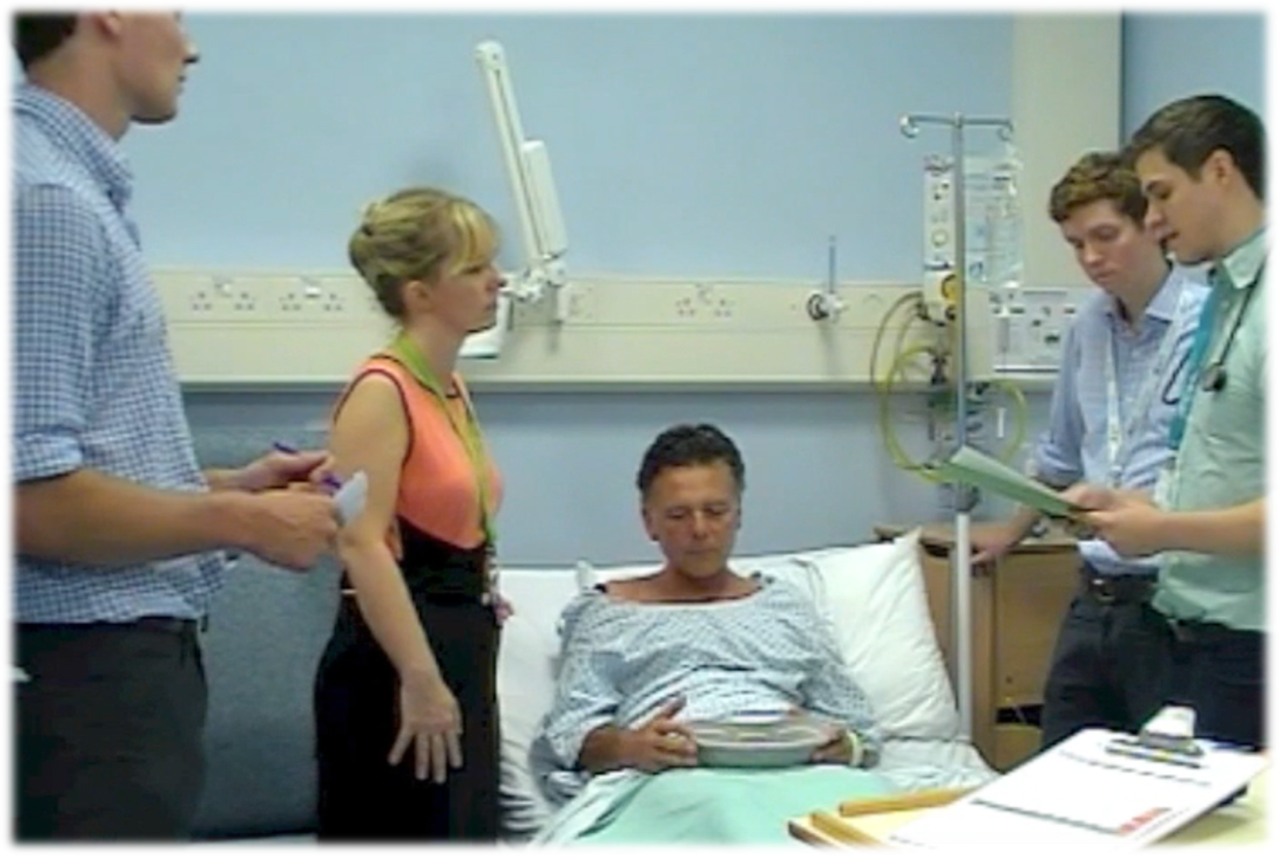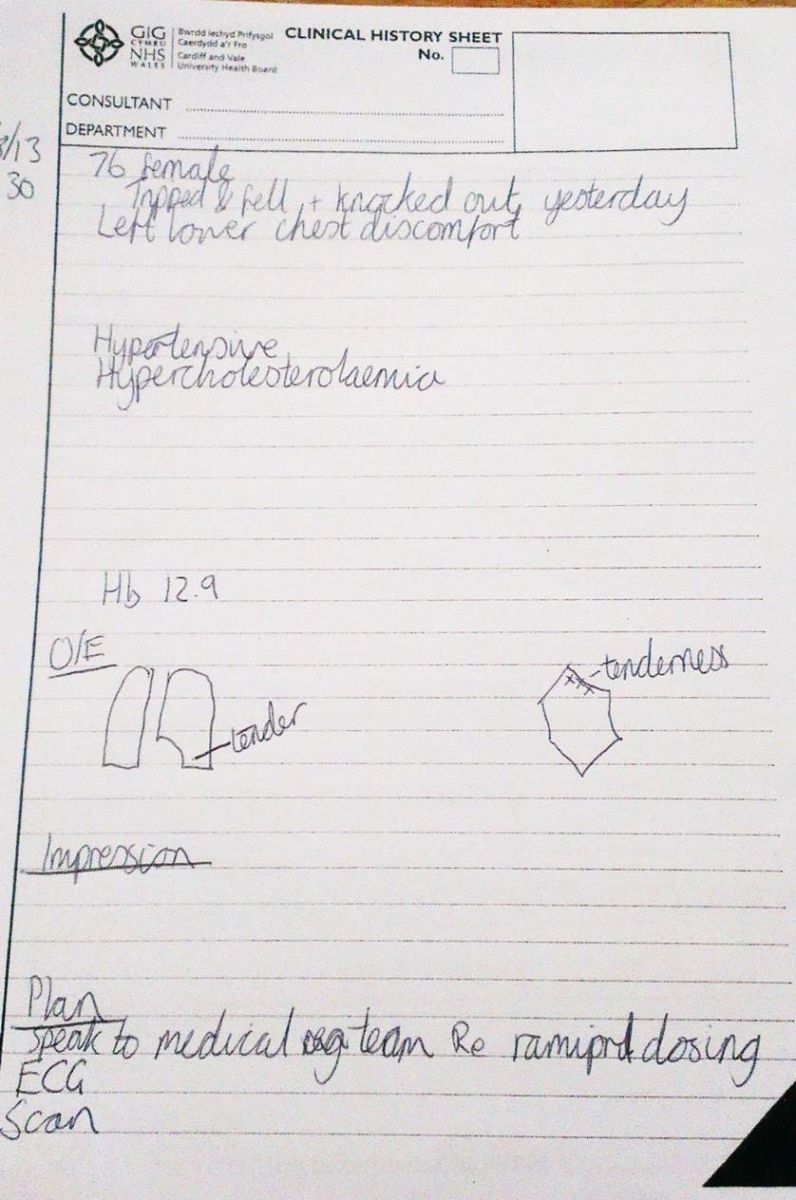


Theme
8JJ Patient safety
INSTITUTION
Cardiff University School of Medicine - Institute of Medical Education
Medical note-keeping is one of a multitude of essential skills1 recognized as challenging to teach in the clinical environment. This is due to time pressures and patient safety concerns on a busy ward-round.
Simulation is an established learning tool which can address these issues2. We aimed to evaluate a large-scale learning event centered on simulating a ward round for students through the use of digital video clips. The intervention was based on Knowles’ adult learning principles as part of curriculum development.
| Knowles' assumption | Utilisation in session |
|---|---|
| Need to know |
Previous ward round experience seeing junior doctors writing in notes |
| Experience (including error) |
Attempting action themselves through first round of simulation |
| Immediate relevance |
Session immediately prior to ‘junior ward assistanceship’ |
| Problem-centered |
Focused on situations |
| Motivation |
Making students aware note writing is an essential and expected skill |
A teaching session on note-keeping was based upon Knowles3 assumptions (table 1) for an entire year group of final year medical students (n=280)
It focused on 1. pre-intervention experience, 2. the teaching intervention itself and then 3. immediate practice with further simulations
- Simulated patient-doctor interactions (doctors and actors) were simulated with digital video and real note sheets

- Students were asked to write appropriate note entries in real time (pre-intervention)
- An intervention on good note-keeping was delivered. Students were encouraged to develop their own solution to meet the demands of good note-keeping or adopt the suggested SOAP (Subjective, Objective, Assessment, Plan) method
- The above process of a simulated ward-round was repeated (post-intervention) and sheets were collected
- A sample of student scripts were obtained and the content was objectively scored (0-17) using the proforma criteria
| Details score (/5) | Overall Clarity (/2) | System used (Y/N) | SOAP used? (Y/N) | History (/2) |
| Clinical Findings (/2) | Assessment (/2) | Plan (/2) | Brevity (/2) | Legibility (easy/ mod/ hard) |
Example note entries pre and post-intervention


Pre-intervention Post-intervention
Pre-intervention, 12% of scripts exhibited no formal structure for the clinical record, and 40% of students used the structure provided in the teaching. In terms of content quality, students achieved mean 4.6 out of 8.
Post-intervention all students used structured entries and 72% used the recommended structure, P=0.0010 (Chi-squared test).
The most improved attributes as a result of the teaching session were the inclusion of an Impression (mean 0.9 vs 1.4 out of 2) and Plan (mean 1.1 vs 1.5 out of 2)
Post-intervention 84% of students had improved/equal content scores and as a group the cohort demonstrated increased scores for patient and clinical data. The overall median content score (range) increased from 10(3-17) to 12(7-17), P=0.00016 (Mann-Whitney U test).
Combining Knowles’ model with video technology is a powerful tool to improve medical note keeping
This can be extended to large group situations
Builds on evidence base combining Knowles theory and undergraduate skill acquisition4
1. Tomorrow’s Doctors, General Medical Council 2009
2. Yasuharu, O., et al. The Utility of Simulation in Medical Education: what is the evidence? Mount Sinai Journal of Medicine, 76: 330-343, 2009
3. Kaufman, D.M. ABC of learning and teaching in medicine. British Medical Journal, 326: Jan 2003
4. Howard, V. M., Englert, N., Kameg, K., Perozzi, K. Integration of simulation across the undergraduate curriculum: Student and faculty perspectives. Clinical Simulation in Nursing, 7(1), e1-e10, Jan 2010
 Send Email
Send Email